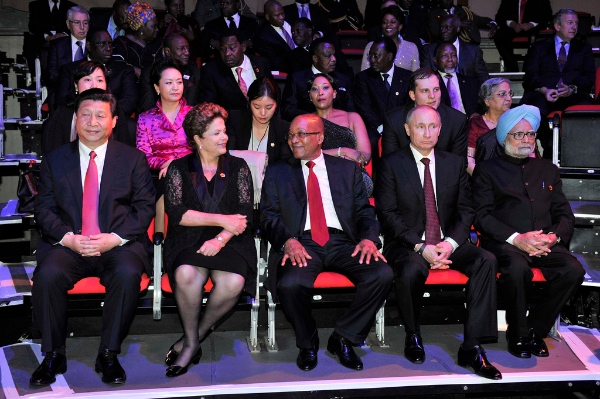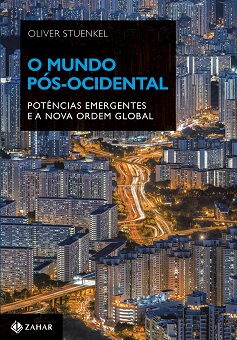
In October 2003, Goldman Sachs published the paper “Dreaming with the BRICs: The Path to 2050”, predicting that, by 2050, the BRIC economies would be larger in U.S. dollar terms than the G-6, which consists of the U.S., Germany, Japan, the U.K., France and Italy. Contrary to an earlier publication about the BRICs in 2001, this paper’s influence surpassed the limits of the financial world, helping the BRICs term turn, in the following years, into a buzzword in international politics.
The BRICs grouping did not turn into a household name because of its conceptual novelty, but rather because it powerfully symbolized a narrative that seemed distant in the 1990s but appeared to make sense in the 2008: A momentous shift of power from the United States and Europe towards emerging powers such as China, India and Brazil was taking place, making the world less Western and more ideologically diverse. Economic liberalization in emerging market economies began to pay off, resulting in consistently higher growth rates than in the developed world. In contrast, the United States’ hitherto unlimited power seemed to reach its limits in costly and potentially ill-conceived military engagements in Iraq and Afghanistan and a challenging ‘war on terror’, which seemed to reduce US legitimacy, opening a window of opportunity for emerging countries to gain greater visibility. At a remarkable speed, unipolarity seemed to turn into a mere transition phase on the way towards a multipolar age. As Randall Schweller and Xiayou Pu argued, “unipolarity, which seemed strangely durable only a few years ago, appears today as a “passing moment.” They write that the United States “is no longer a hyperpower towering over potential contenders. The rest of the world is catching up.”
Yet today, many argue that the BRICS hype was overblown, pointing out that growth rates in the so-called emerging world are now far lower than predicted by Jim O’Neill a decade ago. Except for China, none of the BRICS grow faster than 6%, and in 2014 the United States will grow faster than Brazil. Pundits across the spectrum argue that the BRICS era is over. Time to look to the MINTs (Mexico, Indonesia, Nigeria and Turkey), they say. Indeed, all BRICS countries have been more affected by the global financial crisis than expected. Economic management of governments in New Delhi, Pretoria and Brasília has been disappointing.
And yet, compared to the original BRICs projections made a decade ago, emerging countries are still doing extremely well (what is often forgotten is that in 2003, India grew by only 3.8% in 2002 and Brazil by only 1.1%). As The Economist points out, Goldman Sachs expected the combined GDP of the four economies to amount to about $8.7 trillion in 2013. Reality is far rosier: Even including the recent years of lower growth, the combined GDP will amount to over $15 trillion. Brazil, Russia, India and China have grown faster than Jim O’Neill ever expected.
As Peter Hall points out, the BRICS are undoubtedly facing some growing pains, but they are not as severe as many naysayers put it these days. For the most part, balance sheets of the BRICS economies, although not as robust as in the pre-crisis period, remain healthy. In particular, both China and Russia have ample policy room to ward off a sharp slowdown.
The lull in the emerging world does not alter long-term predictions that China will overtake the U.S. American economy. Despite current problems, India is set to become a major pillar of the world economy in the course of this century. The world economy will not return to the distribution of power of the late 20th century.
In the end, temporarily lower growth may be necessary for policy makers in Brasília, New Delhi and elsewhere to adopt reforms that seemed unnecessary during the fat years. Perhaps not surprisingly, of all the BRICS, it is the Chinese government that has been most aware of the urgency to undertake economic reforms so far. Provided that other leaders can catch up, the BRICS countries are indeed likely to be larger in U.S. dollar terms than the G-6 (U.S., Germany, Japan, the U.K., France and Italy) by 2050.
Read also:
Brazil’s top 10 foreign policy challenges in 2014
Post-Western World’s Books of the Year
International Politics in 2014: Ten Predictions
Image credit: South African Government Communication and Information System








